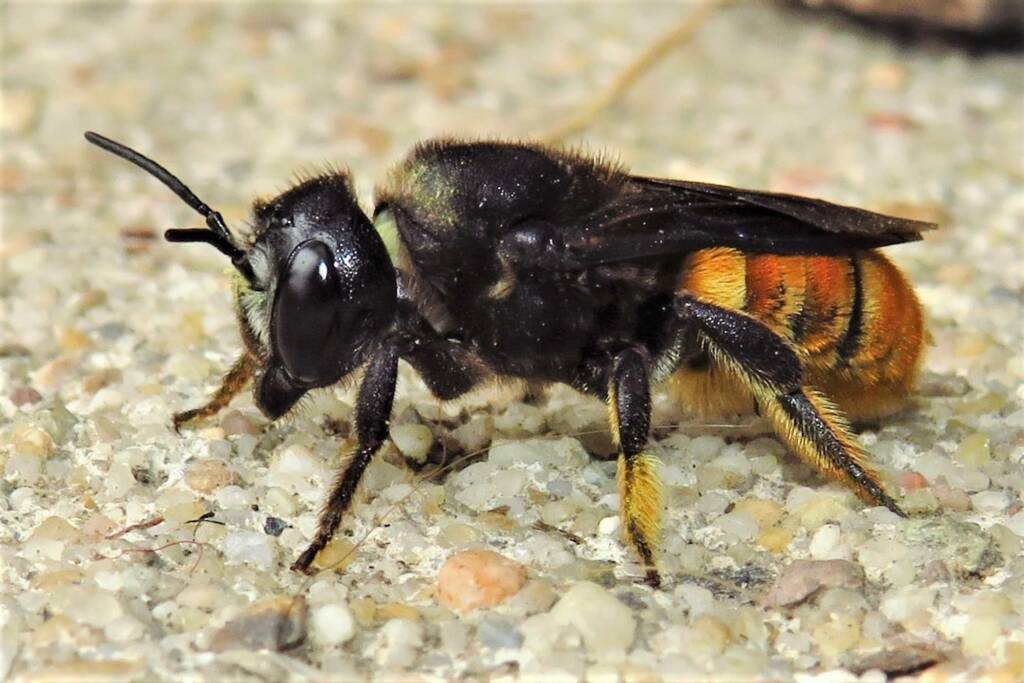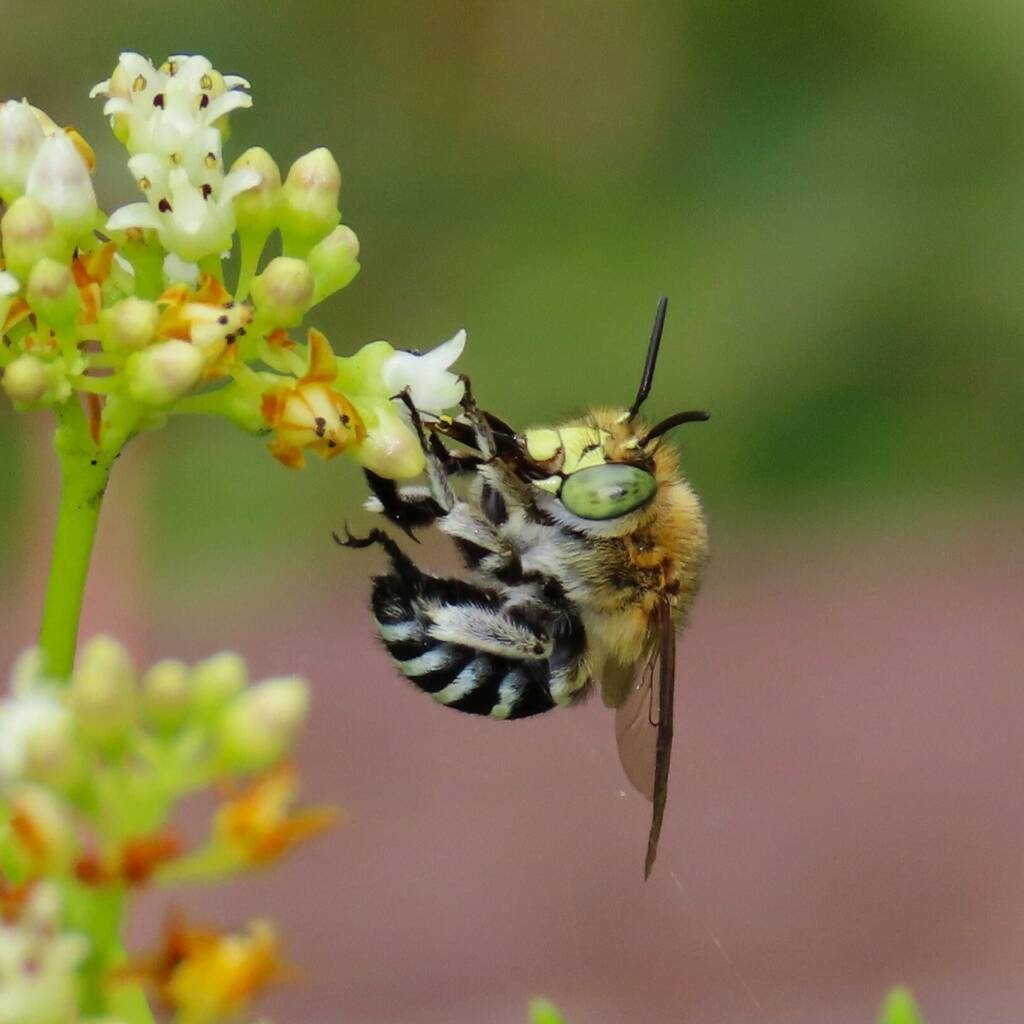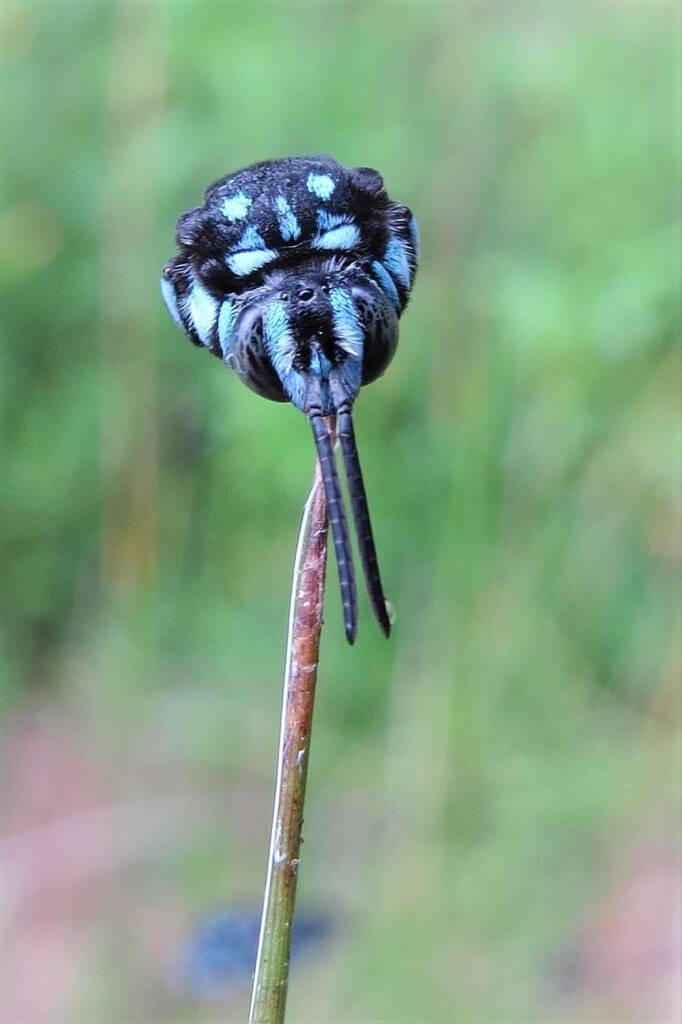Sapphire Coast BeesMegachile ustulata Neon Cloak-and-dagger Bee (Thyreus nitidulus)
The different native bee species can be found all across Australia, including the Sapphire Coast. They vary in size and colour, some being very distinctive species compared to others. Whilst some native bees may be generalist feeders, some native bee species prefer only specific genus/species of plants.

Bees belong to the Order Hymenoptera, that includes wasps, ants and sawflies, within Suborder Apocrita and Superfamily Apoidea. They are presently considered a clade, called Anthophila. There is considered to be over 20,000 bee species worldwide, living on every continent except Antarctica. They live in a range of ecosystems from forest, grasslands and arid desert regions.




You can find out more about our native bees in our section: Insects > Bees
This page is a work in progress, more information coming…
- Scientific classification
- Kingdom: Animalia
- Phylum: Arthropoda
- Class: Insecta
- Order: Hymenoptera
- (unranked): Unicalcarida
- Suborder: Apocrita
- Superfamily: Apoidea
- Clade: Anthophila
- Families:
- Andrenidae
- Apidae
- Colletidae
- Halictidae
- Megachilidae
- Melittidae
- Stenotritidae
- Synonyms: Apiformes
Footnote & References
- Photographs © Deb Taylor
- Flora and Fauna, Eden Community Site, https://www.eden.nsw.au/flora-and-fauna/
Sapphire Coast BeesMegachile ustulata Neon Cloak-and-dagger Bee (Thyreus nitidulus)
Sapphire Coast FaunaAnts Bees Birds Insects Spiders
New South WalesBarunguba Montague Island Bourke Blue Mountains Bundeena Central Coast Kosciuszko National Park Mount Kaputar National Park Lower North Shore Northern Beaches Sapphire Coast Snowy Mountains Region South Coast Stony Range Regional Botanic Garden Sydney
